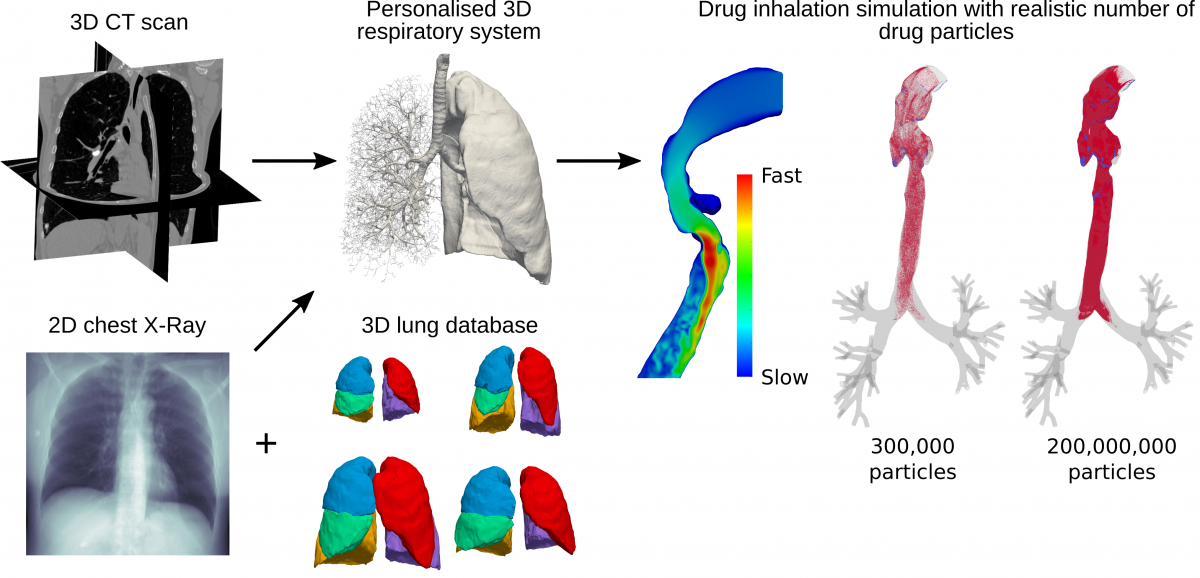Estimates suggest that 20 million people have been diagnosed with asthma, 2.5 million with chronic obstructive pulmonary disease (COPD), and over 250,000 with interstitial lung diseases in Europe and the UK. Patient-specific computer-aided simulations of aerosol inhalation can be a viable approach to optimise drug delivery to the lungs. This project’s research uses patient-specific medical images (computed tomography (CT) scans of lungs) to construct lung airways and multi-scale computational particle-fluid dynamics (CPFD) to simulate transport and deposition of aerosol drug particles in the airways.
The ultimate goal is to provide clinicians with tailored treatment recommendations and underpin decisions in precision respiratory medicine. They also aim to educate patients on inhaler techniques through visualisations of drug deposition in their own airways.
Similar studies exist but, unfortunately, they’ve been conducted with a significantly smaller number of particles which do not correspond to the realistic inhaler dose. This limitation is related to the significant computational resources needed to perform such simulations.
The project seeks to evaluate the implications of underestimating the drug concentration by being the first research group to perform simulations on a realistic dosage being inhaled by a patient. To date, simulations of this size couldn’t be achieved, but we intend to demonstrate that they can be deployed feasibly thanks to powerful cloud computing services.
Supplier: Quistor Enterprises B.V.- Oracle




























